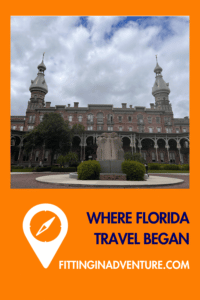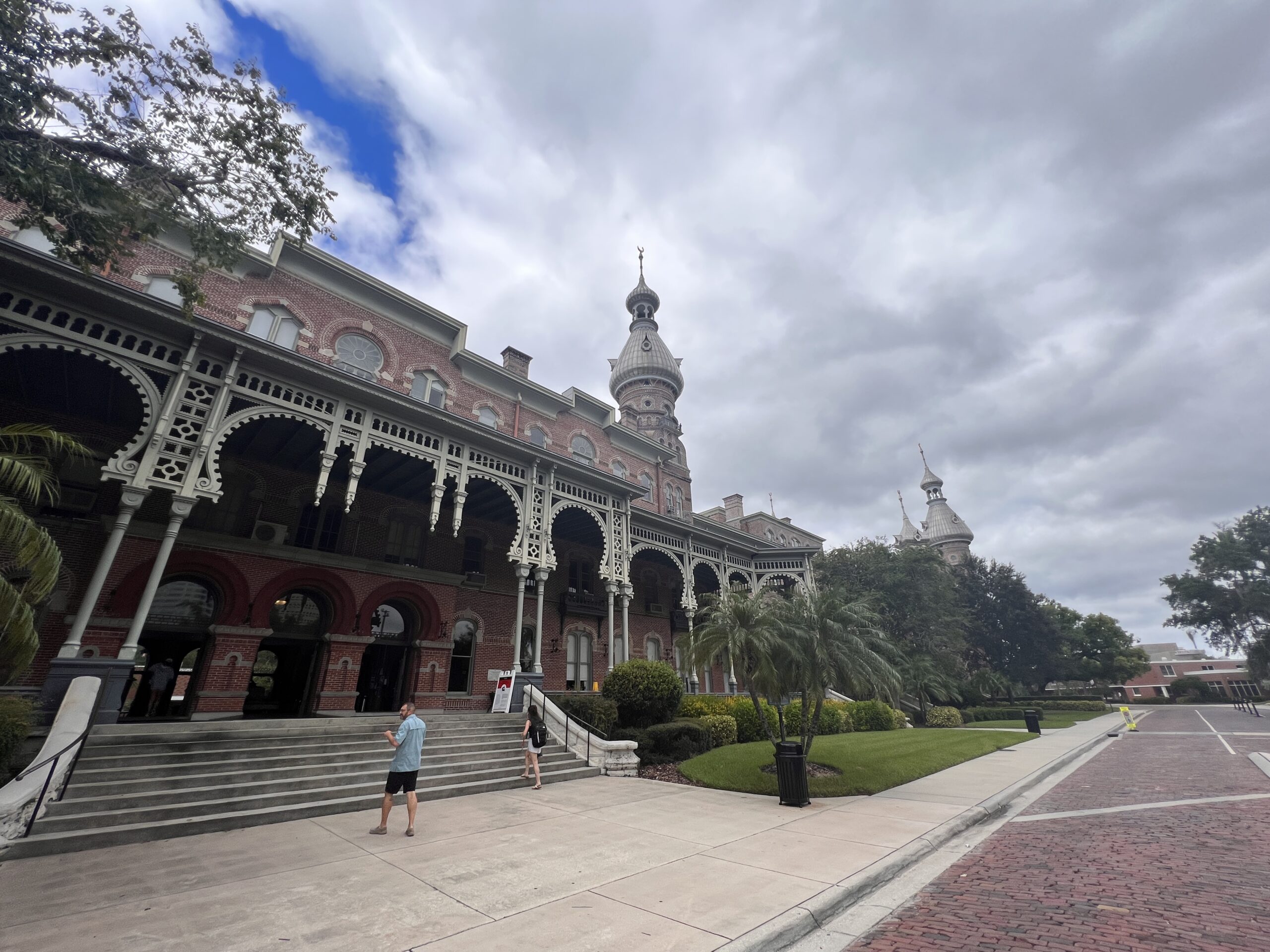Called Florida’s First Magic Kingdom, it was built in the middle of the gilded age as a tourist destination long before the resorts that are here now. You might say it was within these walls that Florida tourism began. Built between 1888 and 1891, it was Florida’s first effort into the resort business.
Disclosure: Some links on our site are affiliate links. If you purchase a linked item, we will make a commission, at no extra charge to you.
Vacations at the turn of the 20th century were vastly different than today. For one reason, travel was a long, tedious process. You didn’t simply go to Florida for a week or two, but for months on end. And trips far from home were a luxury of the rich. You carried with you many trunks of clothes and accessories and an entourage for a travel party. And to get here, you took Henry Plant’s railroad lines.
Don’t forget to subscribe to our youtube channel
Henry Plant came from humble beginnings as a deckhand on a steamship to building a railroad, steamship, and hotel empire. Referred to as the Plant System, his hotels dotted the Florida peninsula and were connected by his rail lines. Of the eight hotels he built, the Tampa Bay Hotel was the grandest and most opulent.
The hotel was designed with Islamic influences. This is clearly seen by the towering minarets. This style, commonly called “Moorish”, was eclectic in its design and was not constrained by classically codified styles such as Greek or Gothic. This gave architects tremendous freedom of invention. Throughout the hotel, there are paintings, statues, and other design elements taken from many different architectural forms and styles. An example of this is the large horseshoe-shaped arches over the doorways. While eclectic, they did serve a practical purpose. The arches allowed light to permeate throughout the interior of the hotel. The ceilings were higher than normal, as well, aiding in keeping the rooms cooler in the heat in the days before air-conditioning.
The accommodations were unrivaled for the time. The first large building in Florida to have electricity throughout. It is also equipped with the first elevator ever installed in Florida. It is still operational today, making it one of the oldest, continually operating elevators in the nation. There were also telephones in every room. And indoor plumbing with private baths in every suite.

Business owners traveling for extended periods of time would still need to take care of their affairs while on the road. The hotel was able to accommodate tending to business while guests were here. The Writing and Reading room was designed with that in mind. Before digital nomads, this was how you worked from the road. Several desks and large tables were set up with seating areas lining the walls. A newspaper rack held the large publications of the time.
The room was used almost exclusively by men. This is evidenced by the spitoons by the desks. At the time, men would refrain from using tobacco in the presence of ladies.
The Spanish-American war only lasted from April until August 1898 but involved tens of thousands of troops. Henry Plant convinced the U.S. Government to use his Tampa Bay Hotel as a base of operations. Teddy Roosevelts Rough Riders camped here while awaiting orders to leave for Cuba. He and his officers were billeted in the hotel while the enlisted camped on the hotel grounds. During the day, Colonel Roosevelt would lead his men in military training exercises before retiring to his lavish suite. When their orders came, they embarked from the nearby Port of Tampa destined for Cuba. Many on Plant’s steamships. Clara Barton, the founder of the Red Cross, organized her hospital workers and nurses in the hotel’s nearby casino. But in those days, a casino was more of just an entertainment space and not gambling like we would associate it with today.
Over the years, many famous guests have relaxed on the porch. From Babe Ruth, Anna Pavlova, Booker T. Washington, and John Philip Sousa. Babe Ruth signed his first baseball contract in the Grand Dining Room. In 1919, during a spring training game, Babe Ruth hit his longest homerun at the adjacent Plant Field. The ball is signed and on display in the Henry B. Plant Museum which occupies a part of the first floor. It soared an astonishing 587 feet!
At the turn of the century, Tampa was still a wild outpost and nothing like it is today. And guests have the opportunity to experience all it has to offer. Hunting and fishing trips can be done right on the grounds. You can even hunt for gators. But there’s also tennis, golf, swimming, and boating. There’s even a horse track for racing. A trainer from Scotland was brought in to teach the relatively new game of golf to guests. Well, relatively new to Americans.
The hotel closed its doors in 1930 due the to Great Depression and the resulting decline in tourism. Three years later the Tampa Bay Junior College, known today as the University of Tampa, was granted permission to use it. Suites and guestrooms became classrooms and laboratories. Administration offices replaced hotel operation offices. And with the exception of the south wing, it still houses these today. The south wing houses the Henry B. Plant Museum and is dedicated to preserving the opulence of the Tampa Bay Hotel. It is kept in its original state with many of the furnishings purchased by Mr. Plant and his wife on their many European trips. You can book guided tours, or walk through at your own pace. Or take the self-guided audio tour and see a glimpse of a life of leisure in historic Florida.

